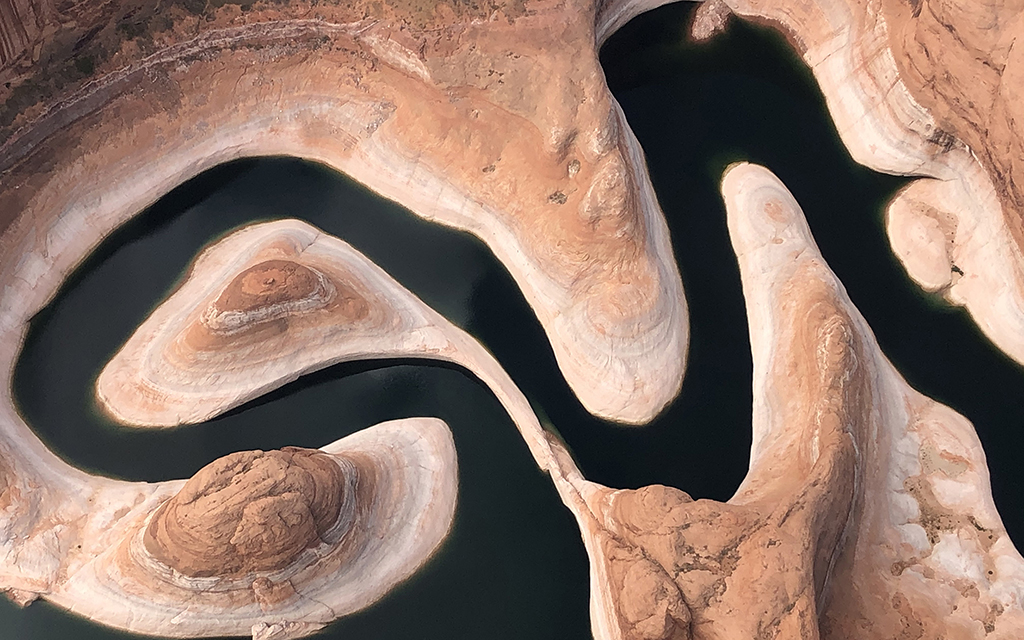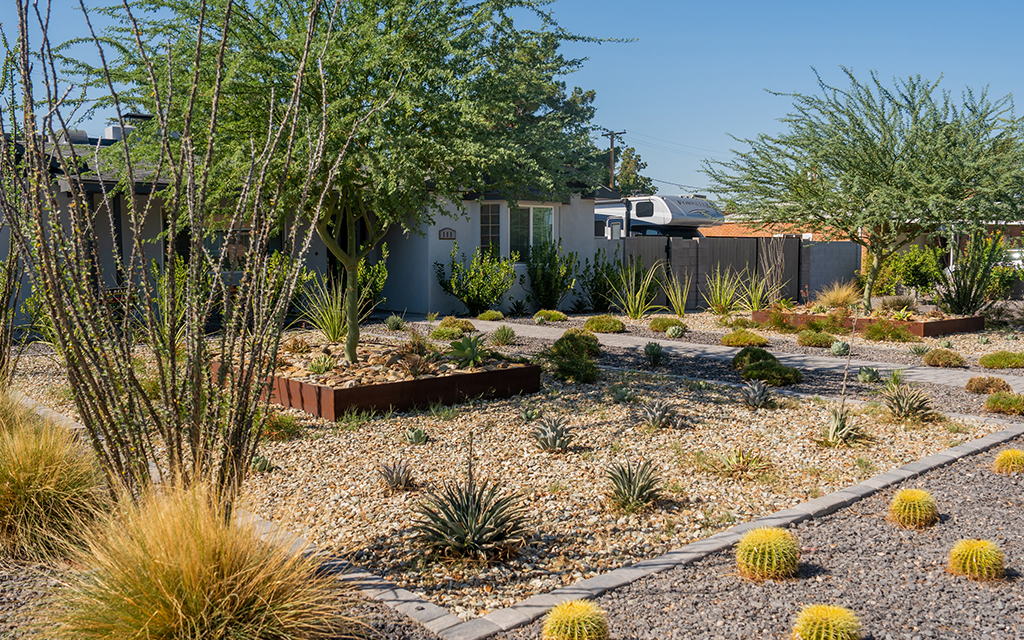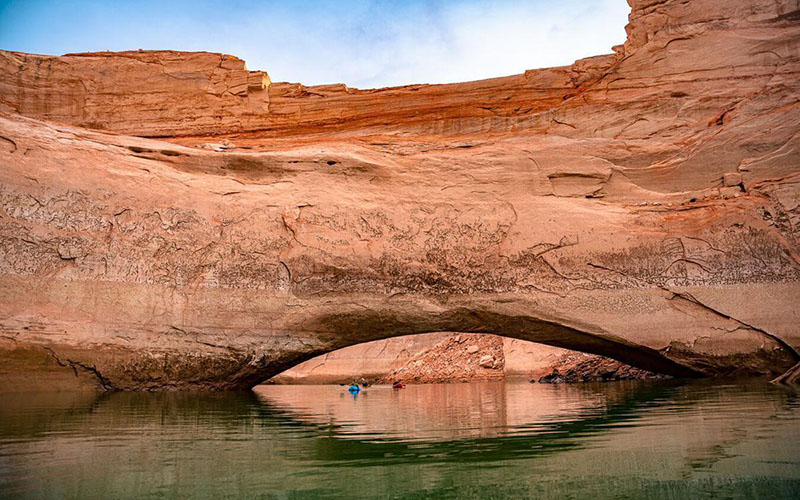
Water levels in Colorado River reservoirs like Lake Mead, shown here in 2918, and Lake Powell continued to fall to dangerously low levels in 2022, triggering a series of cuts in the amount of water states can pull from the river beginning this year. And experts say they expect there will be more cuts to come. (File photo by Corey Hawk/Cronkite News)
WASHINGTON – Experts say few Arizona residents will notice any immediate change to the availability of water in their daily lives after Jan. 1, when steep cuts will be imposed on the amount of water the state can draw from the Colorado River.
But that does not mean they can relax. State and federal water officials expect more cuts will be required in 2023, as they struggle to keep drought-ravaged Lake Powell and Lake Mead from falling to critically low levels.
And it’s anybody’s guess as to when and how those additional cuts will take effect, they say.
“If there’s one thing water managers really like, it’s certainty,” said Tom Buschatzke, director of the Arizona Department of Water Resources. “And 2023 seems to be anything but.”
That uncertainty is felt on the local level as well. Phoenix Water Resources Management Adviser Cynthia Campbell said the most recent projections show that Lake Mead and Lake Powell could drop below the point where the Hoover and Glen Canyon dams can produce hydroelectric power.
“It’s very bad,” Campbell said. “There’s no way to mince words about this … if we’re going to save the functionality of Hoover Dam and Glen Canyon Dam, there’s going to have to be, by necessity, a significant decrease in demand on the river.”
Those cuts would be in addition to reductions already imposed by the U.S. Bureau of Reclamation, which manages the dams and the water that passes through them.
The bureau last summer announced that the lakes had fallen to Tier 2A levels, triggering previously agreed-upon cuts to water supplied to states in the lower basin of the Colorado River, beginning on Jan. 1.
Arizona will see the steepest cuts, with the state set to give up 592,000 acre-feet of water – the amount of water is takes to cover an acre to a depth of 1 foot – in 2023. Mexico would lose 104,000 acre-feet, Nevada would lose 25,000 acre-feet and California would not give up any of its water yet.
Most of the cuts in Arizona will be felt by farmers, with agriculture one of the biggest users of water in the state and one of the lowest priorities for delivery.
But Reclamation has already called on the seven states in the Colorado River Basin to find an additional 2 million to 4 million acre-feet to cut in the coming years, as Lake Powell and Lake Mead fall to the lowest levels since they were filled.
Campbell said that Phoenix is actively preparing for even the worst-case scenario, finding ways to continue providing water, but it will take some help from residents. That means people will have to start thinking about conservation in their daily lives, from making their homes more water-efficient to getting rid of lawns and pools.

A June 2021 photo of Reflection Canyon, upstream of Lake Powell showing the “bathtub ring” of whitened rock exposed as lake levels have fallen to historic lows. (Photo courtesy National Park Service)
“We’re also making sure we’re ready to deliver alternate supplies and make our customers aware of what they can do to be as efficient as they can,” Campbell said.
Colorado River basin states have been planning for years for water restrictions. But Reclamation has said that if the first months of 2023 are particularly dry, Lake Powell levels could drop below 3,490 feet, the minimum level at which the dam can produce electricity. In the worst case, both lakes could fall to the point at which water can no longer flow through the dam, a condition known as “dead pool.”
The bureau stressed that it will do everything in its power to maintain water levels needed for power production and water flow, either by limiting water deliveries to states, by prioritizing Lake Powell over Lake Mead by transferring water from one to the other, or both.
Noe Santos, the Bureau of Reclamation’s river operations manager for the Lower Colorado Basin, said the agency will begin releasing less water from the reservoirs in 2023. Most users will only feel the changes in winter and summer months, he said, when less water overall is pumped because agricultural demand is lower.
One step that some Arizona cities and tribes have already taken to protect reservoir levels is to store some of their water allotment in the lakes. Phoenix is part of that group, having already stored 30,000 acre-feet in 2022 and volunteering to store an additional 30,000.
But Buschatzke said there are concerns across the state, especially among tribal governments, that such goodwill could end up hurting them in the end.
“No one wants to put their water on the table when there’s a chance it could be cut anyway by the mandatory cuts the federal government is considering,” he said.
Those concerns are amplified for tribes that have long fought to have their claims to Colorado River water recognized, and now worry that water could disappear before they ever get a chance to see it.
Campbell said all Arizonans will be stressed in the next three to five years, with water likely to become more expensive as the supply continues to dwindle.
If residents can come together and become more efficient water users, she said, there is hope that the city and state can comfortably adapt. But she stressed that difficult changes are in store, adding that she has been using the “Serenity Prayer” as way to look at the coming years.
“To accept the things you cannot change, and change the things you can,” Campbell recited. “We have to accept the fact that this is going to happen.”


